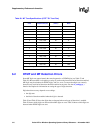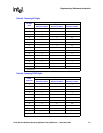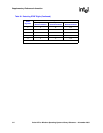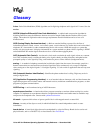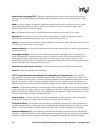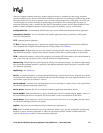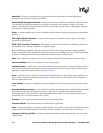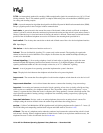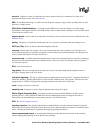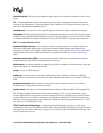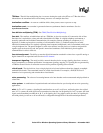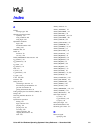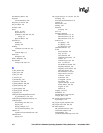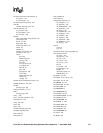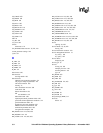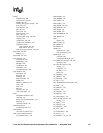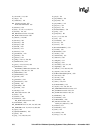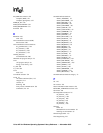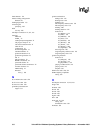
Voice API for Windows Operating Systems Library Reference — November 2003 549
silence threshold: The level that sets whether incoming data to the voice board is recognized as silence or non-
silence.
SIT: (1) Standard Information Tones: tones sent out by a central office to indicate that the dialed call has been
answered by the distant phone. (2) Special Information Tones: detection of a SIT sequence indicates an operator
intercept or other problem in completing the call.
solicited event: An expected event. It is specified using one of the device library’s asynchronous functions.
Springware: Software algorithms built into the downloadable firmware that provide the voice processing features
available on older-generation Intel® Dialogic® voice boards. The term Springware is also used to refer to a whole
set of boards from Intel built using this architecture. Contrast with DM3 which is newer-generation architecture.
SRL: See Standard Runtime Library.
standard attribute functions: Class of functions that take one input parameter (a valid device handle) and
return generic information about the device. For instance, standard attribute functions return IRQ and error
information for all device types. Standard attribute function names are case-sensitive and must be in capital letters.
Standard attribute functions for Intel® telecom devices are contained in the SRL. See standard runtime library
(SRL).
standard runtime library (SRL): An Intel® software resource containing event management and standard
attribute functions and data structures used by Intel® telecom devices.
station device: Any analog telephone or telephony device (such as a telephone or headset) that uses a loop-start
interface and connects to a station interface board.
string: An array of ASCII characters.
subdevice: Any device that is a direct child of another device. Since “subdevice” describes a relationship
between devices, a subdevice can be a device that is a direct child of another subdevice, as a channel is a child of a
board.
synchronous function: Blocks program execution until a value is returned by the device. Also called a
blocking function. Contrast with asynchronous function.
system release: The software and user documentation provided by Intel that is required to develop applications.
T-1: The digital telephony format used in North America and Japan. In T-1, 24 voice conversations are time-
division multiplexed into a single digital data stream containing 24 time slots. Signaling data are carried “in-band”;
as all available time slots are used for conversations, signaling bits are substituted for voice bits in certain frames.
Hardware at the receiving end must use the “robbed-bit” technique for extracting signaling information. T-1 carries
data at the rate of 1.544 Mbps (DS-1 level).
TDM (Time Division Multiplexing): A technique for transmitting multiple voice, data, or video signals
simultaneously over the same transmission medium. TDM is a digital technique that interleaves groups of bits from
each signal, one after another. Each group is assigned its own “time slot” and can be identified and extracted at the
receiving end. See also time slot.



